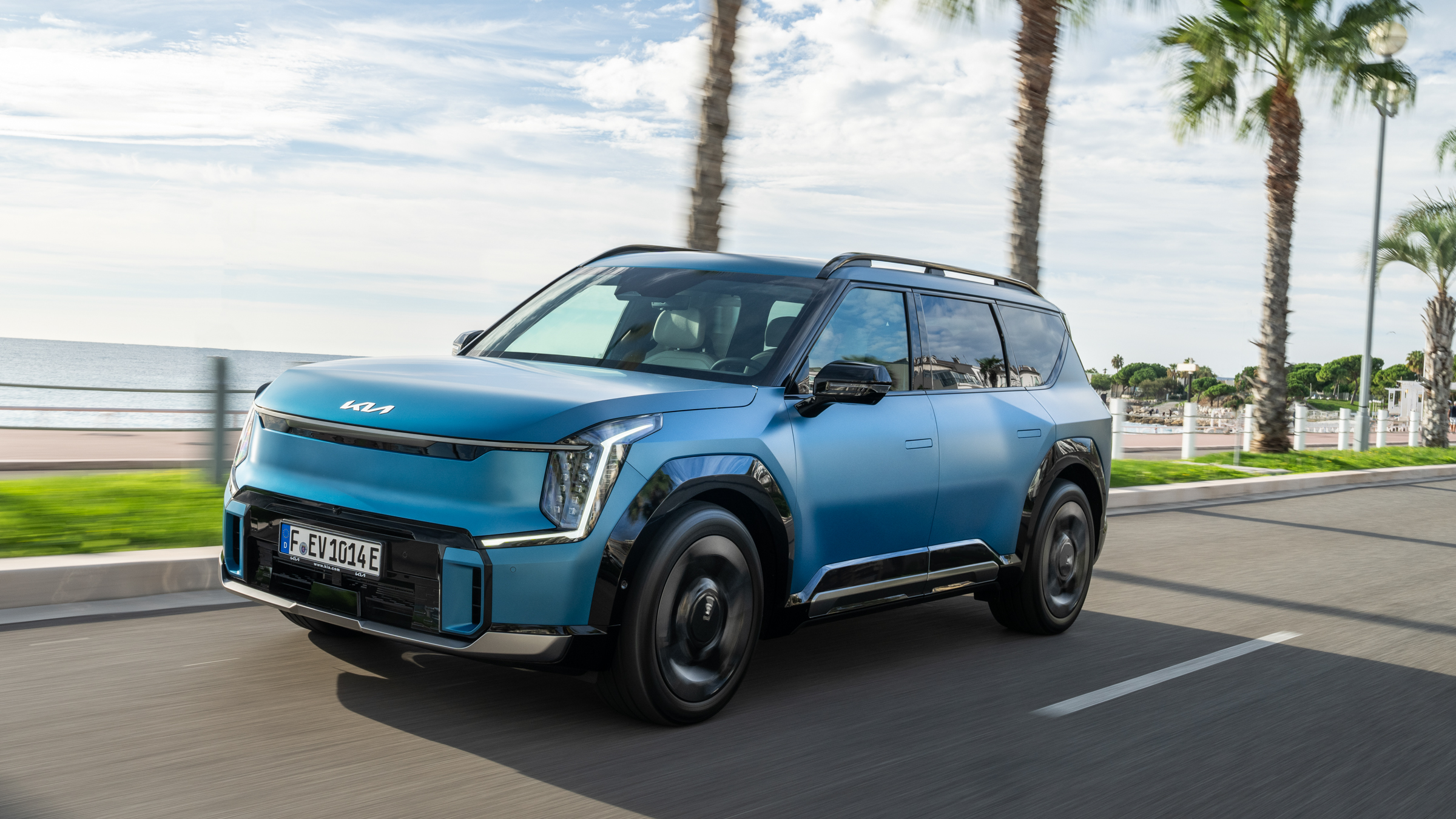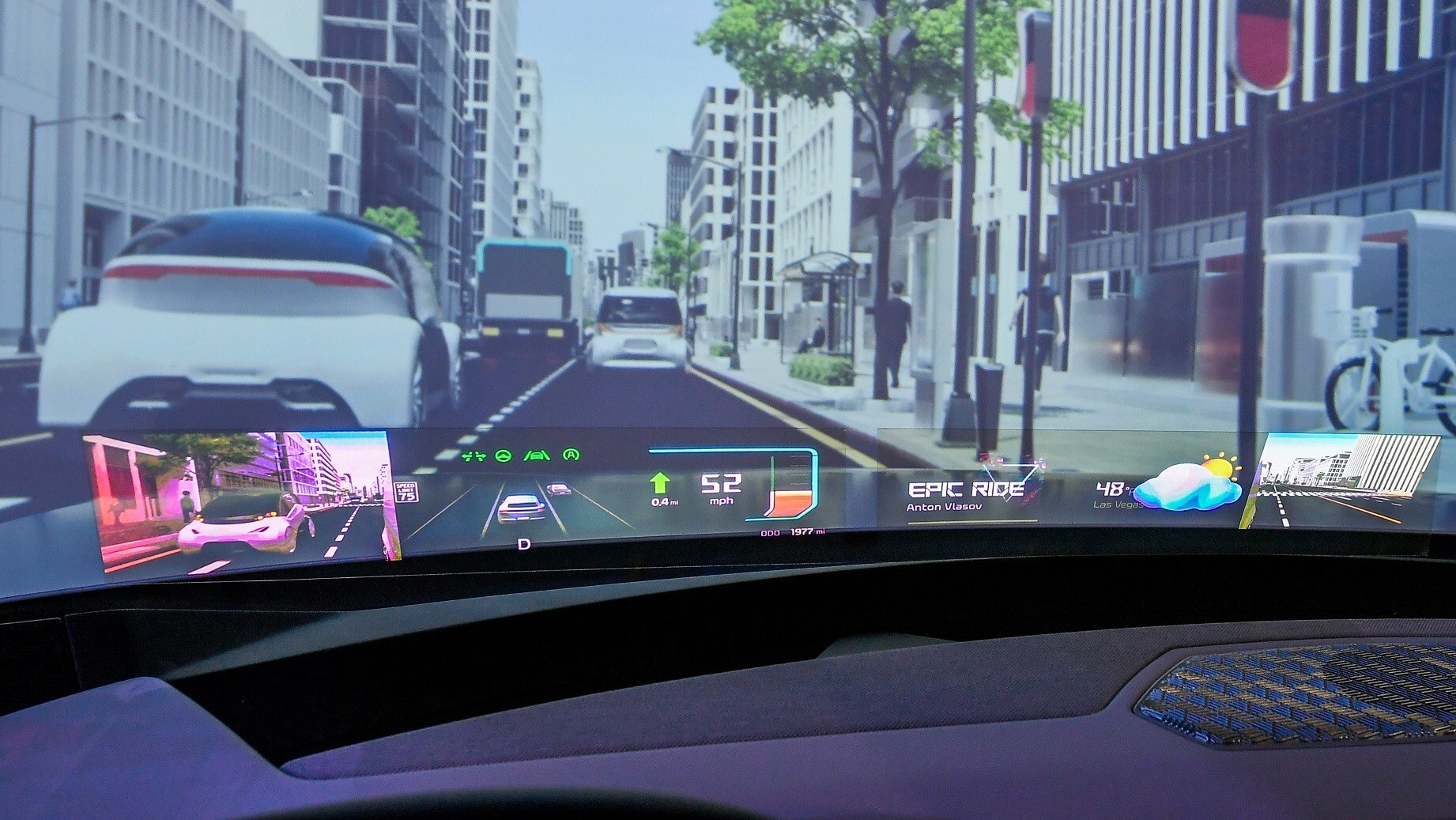
Hyundai Mobis, an automotive parts supplier, used CES 2025 to show off a new head-up display that stretches the entire width of the windscreen.
The company, which supplies parts to Hyundai, Kia and Genesis, hopes to put the next-generation HUD into production by 2027.
Car head-up displays could soon be much larger, and be viewable by both the driver and their passenger, according to Hyundai Mobis.
A producer of components for car companies Kia, Hyundai and Genesis, Hyundai Mobis revealed a next generation of head-up display at the CES technology show in Las Vegas.
Instead of projecting an interface only in one small corner of the windscreen, as today’s systems do, the Hyundai Mobis prototype projects its interface across the entire width of the windscreen. The result is a head-up display that can be used by the driver for navigation and vehicle information, like speed, but also by the passenger for videos and even gaming.
To ensure the passenger’s content doesn’t distract the driver, Hyundai Mobis has given the technology a very narrow field-of-view, so the passengers’ side of the interface cannot be seen by the driver. and vice versa.

Using a modified Kia EV9 to demonstrate the tech, Hyundai Mobis showed how the driver can be shown their speed, navigation instructions and a live feed from a rear-facing camera, while the front-seat passenger can see a different set of information, such as the local weather. They could even cast video content from their phone to the system, or play games projected onto the windscreen without distracting the driver.
BMW also used this year’s CES to show off a new form of head-up display. That technology is baked into the German company’s upcoming iDrive OS X operating system, which will be available on cars coming later this year. However, while BMW’s approach is to project the head-up display interface onto a black strip at the foot of the windscreen, Hyundai Mobis demonstrated how its UI can be projected onto a transparent optical film sandwiched between the glass panes of the windscreen.
Hyundai Mobis said of the technology: “From the outside, the windshield retains the appearance of a standard transparent glass window. However, inside the vehicle, it delivers crystal-clear visuals for both drivers and passengers, even under bright outdoor conditions, thanks to its high brightness and superior colour reproduction.”
The South Korean company said how the display uses a specialised film embedded with a “holographic optical element” which “utilises the principle of light diffraction to project images and videos directly to the viewer’s eyes.” The technology was developed in collaboration with Zeiss, the German optical company.
Although just a concept for now, Hyundai Mobis said it and Zeiss plan to complete the pre-development stage by mid-2026, and have a goal of bringing the technology to market by 2027.







